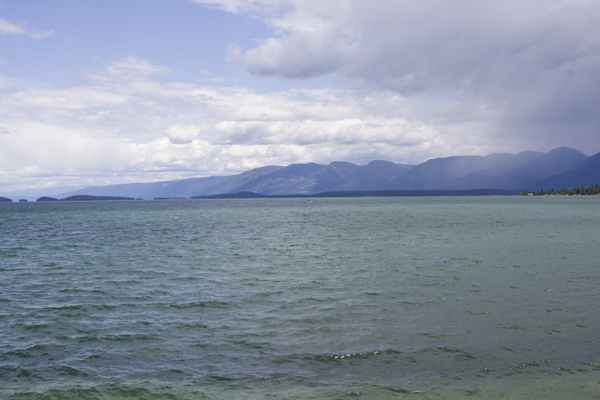EPA Releases “First Ever” National Lake Study – NJ Lakes Far Worse Off

this is what eutrophication looks like
In an attempt to generate a focus on the poor and declining ecological health of NJ’s lakes and the failure of DEP to use existing regulatory tools to protect and restore lake water quality, back in September, we wrote: Our Lakes are Dying – Ten Years After Critical EPA Audit, DEP Fails to Act.
We wrote:
Ten YEARS ago, an EPA Inspector General Audit Report found major deficiencies in DEP Lakes Management Programs, as well as failed EPA oversight of NJDEP’s compliance with Clean Water Act requirements. An entire Chapter of that EPA IG Report was titled Lakes Need More Attention. The EPA IG Audit made scathingly negative criticisms of DEP and found:
“New Jersey has inadequate monitoring and assessment of lake conditions in the State.
More than two-thirds of the public lakes have not been tested and more than 97 percent of those tested were found to be eutrophic. The limited attention to lakes has occurred for several reasons: (1) the State has concentrated many of its monitoring and assessment resources on coastal waters and rivers; (2) EPA has provided less funds; and (3) EPA guidance has been less intensive for lakes. As a result, New Jersey lakes were found to be in poor condition and there was no assurance that lake water quality issues will be adequately addressed.
NJDEP needs to develop and implement a plan to assess and report the status and trends of all publicly owned lakes.
[EPA] Region (2) needs to periodically review and monitor the State’s 10-year total maximum daily load schedule to assure that planned actions are being met and commitments are being achieved.
While the State’s shell fishing and beach monitoring activities improved, other water bodies including lakes and ponds, have suffered. Chapter 4 provides more detail on how the assignment of a lower priority has affected the State’s lakes.”
Ten years later, NONE of those EPA and DEP problems have been fully corrected.
Today, according to an EPA press release, we learn that US EPA has released the “First Ever Baseline Study of US Lakes” (released just in time for ice fishing!)
Unfortunately, the EPA Report does not provide state specific lists of lakes – so it is not possible to find out how specific NJ lakes are doing.
However, a quick review of the findings reveals that the Nation’s lakes are not doing so well. But NJ’s lakes are doing far worse than national conditions (see: DEP “NJ Ambient Lake Monitoring Network”.

While this new EPA Report documents troubling water quality and ecological conditions of the nation’s lakes, it deviates from the regulatory assessment and national reporting formats required under Section 303 and 305 of the Clean Water Act. Those provisions are designed to hold EPA accountable, empower citizens, inform Congress of the conditions of the nation’s waters, and document if states are meeting the goals of the Clean Water Act. By decoupling science from regulation, EPA frustrates efforts to restore lake resources and enforce the Clean Water Act, exactly the opposite of Congressional intent.
EPA’s analysis aggregates and formats the data in a way to make it impossible to identify local lakes. The Report presents findings in a way that simplifies water quality and ecological indicators to stress the good news (e.g. by reporting good versus poor conditions). These indicators are not linked to regulatory standards and criteria for legal “impairment” under the Clean Water Act, thus the report fails to identify the mechanisms to protect and restore the water quality and health of our lakes.
The Report fails to provide regulatory information, yet it makes conclusions regarding regulatory performance. By failing to provide the regulatory status (ie. “impairment”) of the nation’s lakes, the Report frustrates accountability and undermines true transparency and accountability.
According to EPA, the key findings are:
Biological Quality – 56% of the nation’s lakes are in good biological condition.
Lake Physical Habitat – Of the stressors included in the NLA, poor lakeshore habitat is the biggest problem in the nation’s lakes; over one-third exhibit poor shoreline condition. Poor biological health is three times more likely in lakes with poor lakeshore habitat
Nutrients – About 20% of lakes in the U.S. have high levels of phosphorus and nitrogen. High nutrient levels are the second biggest problem in lakes. Lakes with excess nutrients are two-and-a half-times more likely to have poor biological health
Algal Toxins – The NLA conducted the first-ever national study of algal toxins in lakes. Microcystin – a toxin that can harm humans, pets, and wildlife – was found to be present in about one-third of lakes and at levels of concern in 1% of lakes.
Fish Tissue Contaminants – A parallel study on fish tissue shows that mercury concentrations in game fish exceed health based limits in about half of lakes (49%); polychlorinated biphenyls (PCBs) at potential levels of concern are found in 17% of the lakes.
Trophic Condition – The NLA establishes the first nationally consistent baseline of trophic status. Over 36% of the nation’s lakes are mesotrophic, based on chlorophyll-a concentrations.
Changes in Trophic Condition – When compared to a subset of wastewater-impacted lakes 35 years ago, trophic status improved in one-quarter (26%) of those lakes (Figure ES-3). This indicates that investments in wastewater pollution control are working
We will be looking more closely at this EPA Report and comparing it to NJ lake data. More to follow.
Closing note: EPA put the big CYA caveat right up front:
This document contains information relating to water quality assessment. It does not substitute for the Clean Water Act or EPA regulations, nor is it a regulation itself. Thus, it cannot impose legally binding requirements on EPA, States, authorized Tribes or the regulated community, and it may not apply to a particular situation or circumstance.
